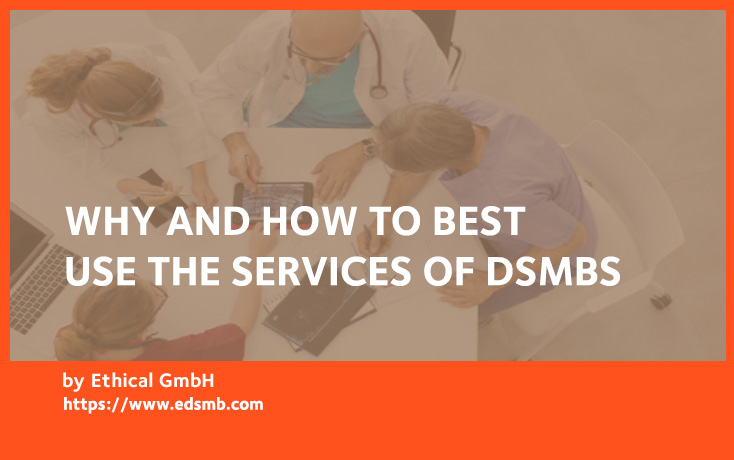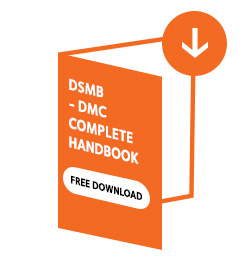During the clinical development phase of a new drug, especially during Phase III or in confirmatory trials, there is a recognized need to keep the investigators separated from the already collected data. Indeed, knowledge of ongoing results can subtly or explicitly affect the care of trial participants, methods of data collection or patient recruitment, induce bias, and ultimately affect the trial scientific integrity. Failure to monitor the ongoing data, however, may put patients at undesirable risk, especially if the cumulative data indicate a so far unknown adverse consequence of the therapy. The presence of a DSMB balances the ethical interest between the sponsor, investigators and participating subjects. Here are some explanations on the role of DSMBs, their structure, function and the best way to set them up and run them for the optimal interest of the patients.
Patients accepting to participate in experimental clinical trials must be protected from undue risk during the development of the medicines they need. This principle is the foundation of Good Clinical Practice (GCP) and is clearly stated in the Declaration of Helsinki, the cornerstone document on human research ethics. A DSMB ensures at the same time the protection of the participants and the sponsor’s obligation to report adverse events. A DSMB also balances the sponsor’s interest to end the trial early if the drug has no effect or if it shows outstanding benefit, and the investigators’ desire to disseminate new scientific information as soon as it becomes available.
The regulations and rationale for DSMBs
While the strict requirements of regulatory bodies and Health Authorities focus on the obligation to collect and report adverse events within strict timelines, the principle of an independent review of aggregated data is also described by these same bodies. The FDA, EMA, ICH and the NIH have all issued guidelines describing the role and rationale for DSMBs. In 1979, the Clinical Trial Committee Guide of the US National Institutes of Health (NIH) stated, “...every clinical trial should have provisions for data and safety monitoring... Monitoring should be commensurate with risks.” In 1994, the NIH Committee on Clinical Trial Monitoring stated, “...all trials, even those that pose little likelihood of harm, should consider an external monitoring body”. Currently, NIH-funded trials require a data safety monitoring “plan”, as distinct from a data safety monitoring “committee”; sometimes that plan will involve external independent experts, and sometimes it will consist solely of internal NIH members.
The International Conference on Harmonization Guidance E6 (6), Section 5.5, says that DSMBs should assess the progress of a trial, both in terms of safety and efficacy, and should make recommendations to the sponsor as to whether to continue, modify, or stop a trial.
Safety monitoring during clinical trials: DSMBs and other groups
Safety is monitored by other groups than the DSMB as well. The investigator observes the subject at the bedside or at the clinic visit. On noting an unexpected serious adverse event (SAE) that appears to have been caused by the study drug, the investigator has a regulatory obligation to report that event to the sponsor. The pharmacovigilance team is responsible for reviewing adverse events (AEs), especially those deemed to be “serious” or “of special interest”, to assess the safety of the experimental treatment. Finally, the local institutional review boards (IRBs) or ethics committees (ECs) review information about the events that occur at their site. Although these three mechanisms can identify AEs of concern, their lack of knowledge of the entire experience of the trial and the fact that many studies are blinded make it difficult to judge the overall safety of an experimental treatment. In a blinded trial, the investigator, the pharmacovigilance group, or the IRB/EC may observe a surprising and worrisome event, but they do not know whether the event occurred in a treated or a control participant. Furthermore, the investigator and the IRB/ECs do not know how many of these events have occurred in the trial as a whole. Only a DSMB, unblinded to the treatment allocation and aware of all events that have occurred, has a holistic view by treatment group.
The structure and function of a DSMB
The members of a DSMB are neither part of the sponsor organization nor trial investigators. The DSMB is therefore in the ideal position to perform such tasks provided that members are independent of the sponsor and have no vested interest, either scientific or financial, in the trial’s results or in its continuation. ICH guidance E9 (5) states that the DSMB should have written operating procedures and that it should maintain records of its meetings and the interim results it reviewed. Detailed instructions have been given in the various guidelines and have been summarized in a recently published DSMB Handbook and other publications.
Can software be of help?
Setting up and operating a DSMB according to the above rules can be done with traditional tools. In person or online meetings, PowerPoint presentations and hand-written minutes exchanged by email may be sufficient especially for smaller and shorter studies or when the safety situation poses only few issues. However, in more complex situations where many parties (sponsor, partner sponsor, DSMB members, independent experts, independent statisticians, CRO etc.) are involved, when the trial is long with many reviews along the way, the use of a software platform should be considered to ensure consistency, compliance with the regulations and charter and comprehensive documentation.




